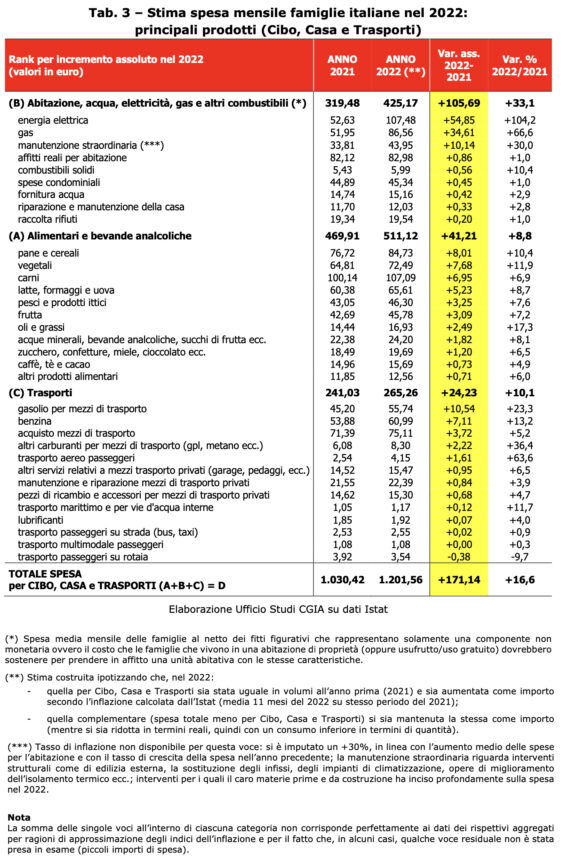The obligatory expenses of Italian families continue to increase. According to an estimate by the CGIA Research Office referring to 2022 (Estimate constructed assuming that, in 2022: 1) that for Food, Home and Transport was equal in volume to the previous year (2021) and increased, in terms of amount, according to inflation calculated by Istat (11-month average of 2022 over the same period of 2021); 2) the complementary one (total expenditure minus food, home and transport) has remained the same in terms of amount (while it has decreased in real terms, therefore with lower consumption in terms of quantity), purchases for food/drinks, for transport and for the home were, on the total average monthly expenditure of an Italian family (Average monthly expenditure of households net of notional rents which represent only a non-monetary component, i.e. the cost that households living in their own home (or usufruct/free use) would have to bear to rent a housing unit with the same characteristics . Therefore, the figurative rents have not been considered both in the aggregate (B) relating to the dwelling of which they would belong and in the aggregate (E) of the total expenditure), equal to 59,6 per cent. In monetary terms this means that, compared to an average monthly expense of 2.016 euros, 1.202 euros last year were "absorbed" by compulsory purchases: of which 265 euros for petrol-diesel and expenses on public transport; 425 euros for the maintenance of the house and for electricity-gas-condominium expenses bills and, finally, 511 euros for food and soft drinks. Due to the increase in prices recorded last year, compared to 2021 it is assumed that the incidence of this type of expense has grown by 3,8 percentage points.
In short, due to inflation we spend more, we bring home fewer goods and most of the spending - for food, fuel and bills - we do to "live" and to go/return to work. Between 2021 and 2022, in fact, the outlays for obligatory expenses of the average Italian family increased by 171 euros (+16,6 percent). Otherwise, complementary (or marketable consumption) - Complementary expenditure: for Alcoholic beverages, Clothing/footwear, Furniture/household items-services, Sanitary/health services; Recreational activities etc.; Instruction; Accommodation/catering services; Other goods and services (personal care, personal effects, insurance/financial services, etc.) are languishing. Despite the average increase in inflation in 2022 hovering around 8 per cent, in absolute terms the increase in this type of expenditure is estimated to be nil.
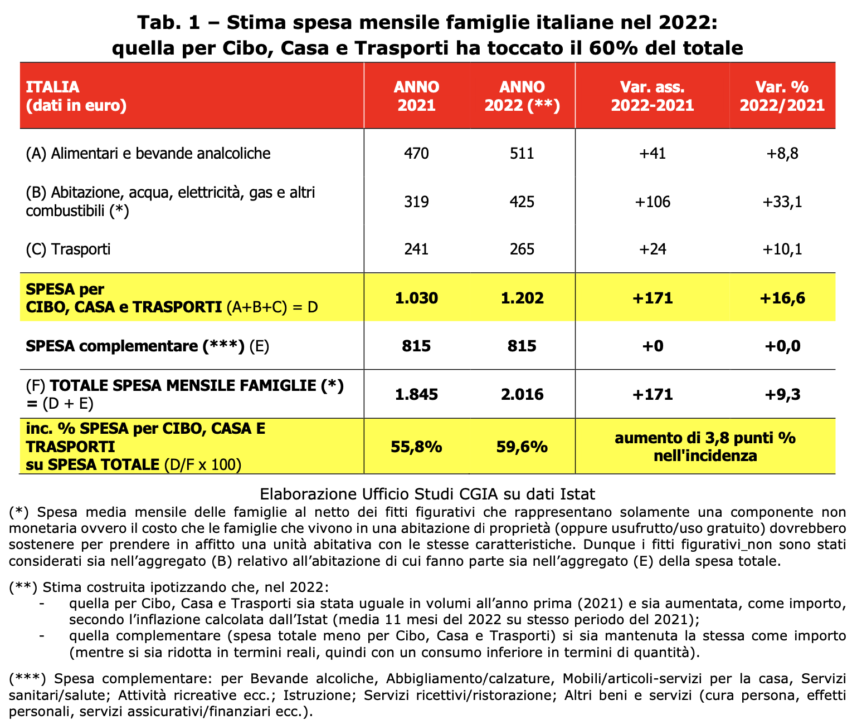
In other words, it is assumed that in the last two years the average Italian family has spent 815 euros a month to purchase alcohol, clothing/footwear, furniture, leisure, catering, accommodation, education, healthcare, personal care, etc.
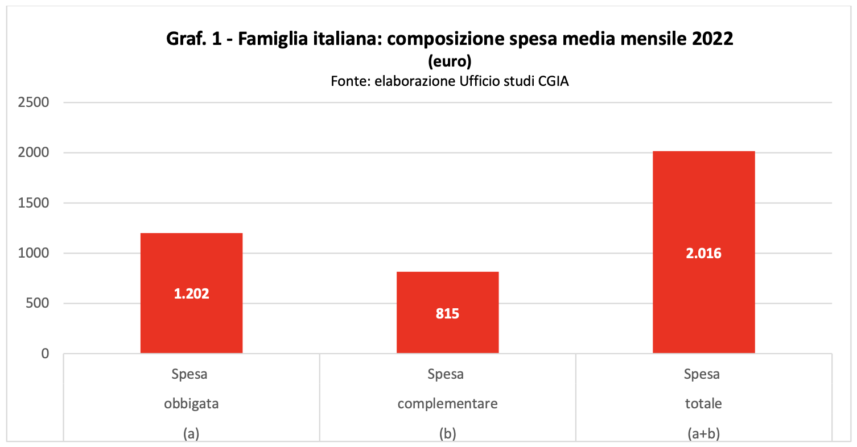
Not only. But if organized large-scale distribution and online sales have recorded positive results, small-scale commercial and artisanal activities in the sectors just mentioned have instead seen their economic condition worsen.
The consolidated data by geographical breakdown referring to 2021, on the other hand, show us that the incidence of compulsory spending on the total is higher in the South and in the Islands than in other areas of the country. Obviously, the lower spending capacity of families in the South contributes significantly to the emergence of this result.
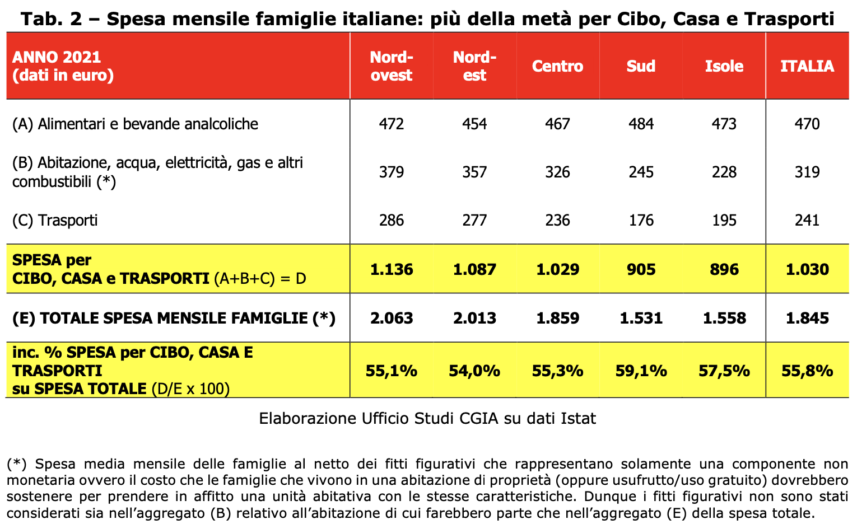
It should also be noted that starting from 2017, the incidence of compulsory expenditure on the total tends to grow until it reaches the peak estimated for 2022 of 59,6 per cent.
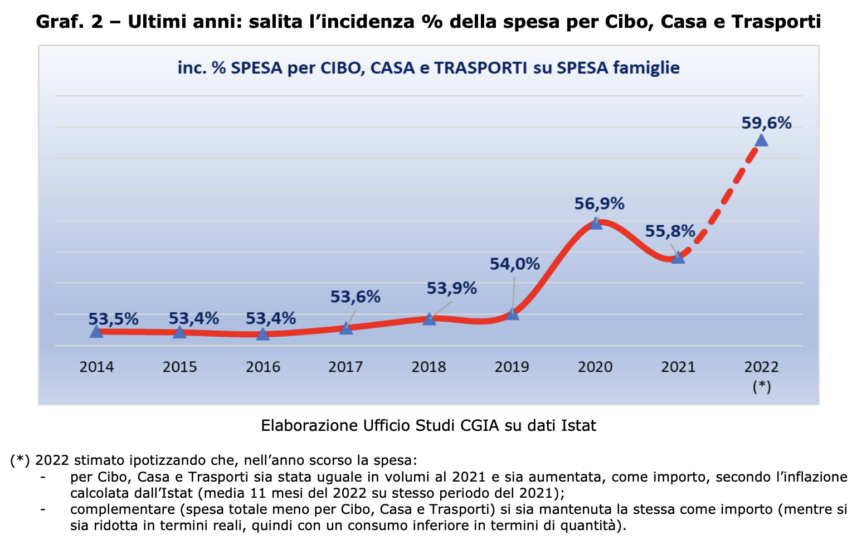
According to the latest data available for 2021, the highest average expenditure at national level is attributable to families residing in the autonomous province of Bolzano (3.116 euros). These are followed by those located in Lombardy (2.904 euros), in the autonomous province of Trento (2.791 euros), in Valle d'Aosta (2.721 euros) and in Lazio (2.712 euros). The ranking is closed by Sicily (1.992 euros), Calabria (1.915 euros) and Puglia (1.808 euros) – the data reported in the graph. 3 also include notional rents.
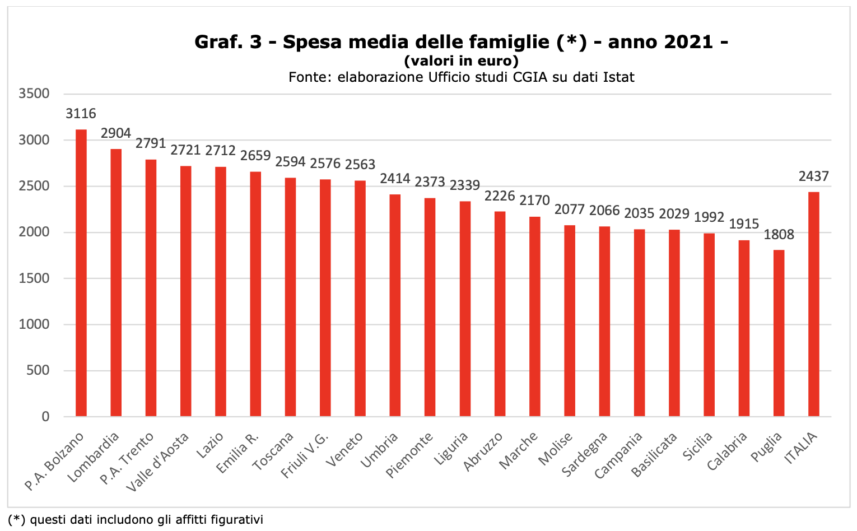
From the breakdown of the three items that make up the obligatory expenses (household, food and transport) it emerges that the sum of consumption for bills (electricity, water, gas, waste, etc.), basic foodstuffs (bread, milk and meat ) and fuels (diesel, petrol, tolls, etc.) amount to over 52 per cent of the average annual compulsory expenditure of the Italian family (equal to 1.202 euros). Bills, for example, are close to 54 percent of the entire cost of the item “Housing, water, electricity, gas and other fuels. Expenditure on bread, milk and meat, on the other hand, is equal to 50 per cent of total expenditure on food and non-alcoholic beverages. Lastly, fuel and tolls amount to 53 per cent of the total expenditure of the Transport item.
